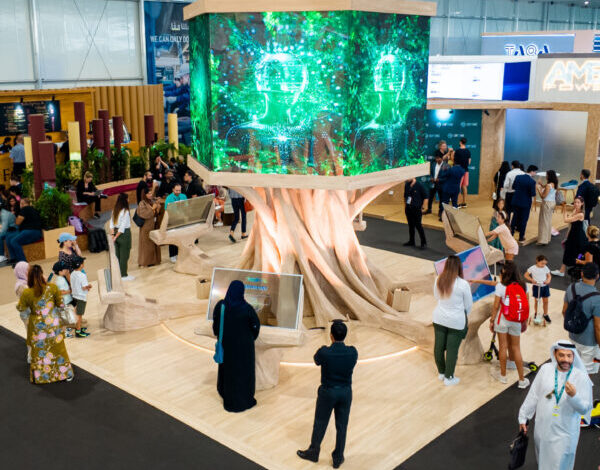
As people spend more of their lives in digital environments, something fascinating is happening: the more virtual we become, the more we crave what cannot be digitised, authentic human connection. Algorithms may be able to anticipate behaviours, optimise outcomes, or mimic creativity, but they cannot replicate the spark of shared emotion in a room full of people. That truth is why live experiences remain one of the most powerful storytelling platforms of our time.
Where Data Meets Emotion
AI’s role in this space isn’t to replace the human element, but to enhance it. When deployed thoughtfully, AI becomes an invisible collaborator, shaping events in real time through data, analytics, and predictive modelling. At global gatherings we’ve seen installations where AI interprets environmental data into a glowing tree of life, robotics visualised as living art, or soundscapes generated dynamically from audience inputs. These moments remind us that technology can deepen the emotional resonance of live experiences when it translates numbers into something people can feel.
Auditing the Room in Real Time
One of the most exciting frontiers is real-time audience intelligence. AI can audit the energy of a room as an event unfolds, tracking sentiment, attention, or engagement, and feed those insights back into lighting cues, sound design, or narrative direction. Imagine a keynote that adjusts tone depending on audience reaction, or a concert where the music evolves with the crowd’s energy. This isn’t a broadcast to passive listeners; it’s a dialogue between audience and story, mediated by AI.
The Storytelling Toolbook of the Future
For creators, AI expands the toolbook. Storyboards can be simulated at speed, testing multiple narratives before a single piece of staging is built. Outputs such as generative video or adaptive visuals can create variations that never play the same way twice, making each event unique. Yet the human role remains indispensable. Algorithms provide infinite possibility; humans bring meaning, taste, and cultural sensitivity. The future of live storytelling lies not in choosing between the two, but in layering them together.
A Shift in Models and Expectations
This integration of AI is already shifting how events are conceived and delivered. Clients are beginning to request experiences that are not fixed but adaptive, where outputs evolve in the moment. That requires new models of collaboration, new deliverables, and new measures of success. Instead of evaluating an event on static KPIs, we may begin to measure how well it responded, adapted, and personalised itself in real time.
Human Connection at the Centre
Ultimately, AI in live storytelling is not about replacing what makes experiences meaningful. It is about enhancing it. The laughter, the shared gasp, the collective silence, these remain uniquely human. AI can help us get there with more precision, more personalisation, and more creativity, but it cannot replicate the feeling itself. In a world that is becoming ever more digital, that human connection is the one thing technology cannot, and should not, automate.



